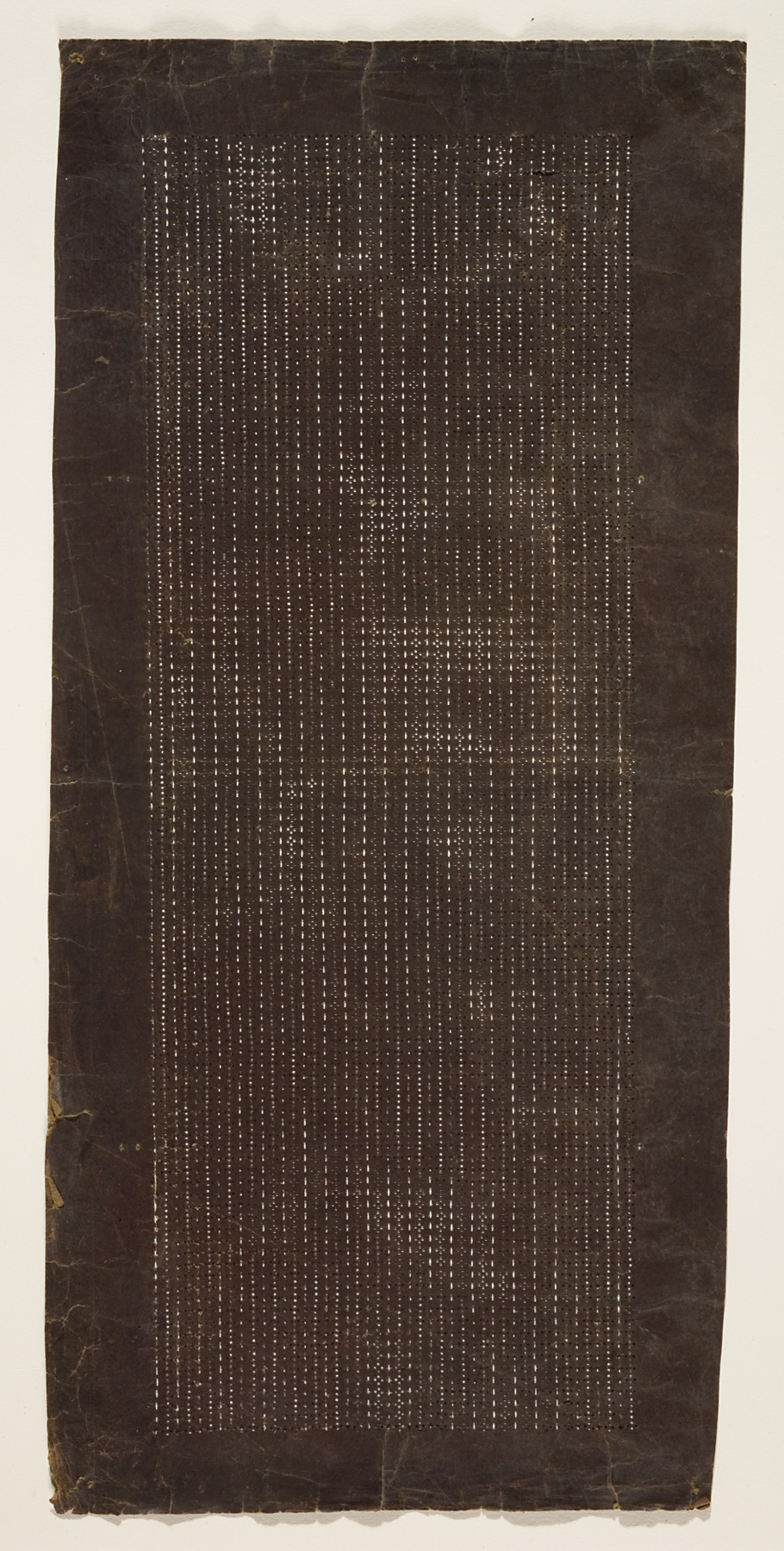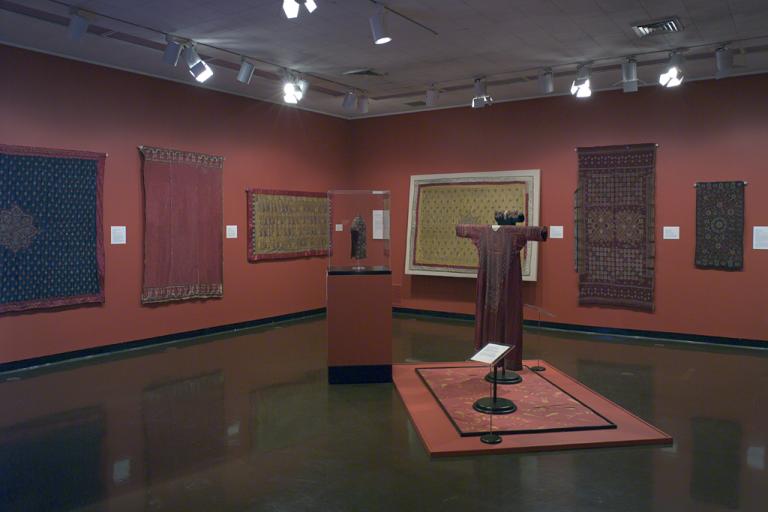katagami stencil for a yukata or kimono, unknown maker from Japan
Artwork Overview
katagami stencil for a yukata or kimono
, Meiji period (1868–1912) or Taisho period (1912–1989)
Where object was made: Japan
Material/technique: persimmon tannin; dôgubori; laminating; mulberry paper
Dimensions:
Object Length/Width (Length x Width): 19.5 x 42 cm
Object Length/Width (Length x Width): 16 1/2 x 7 3/4 in
Mat Dimensions (Height x Width): 25 x 16 in
Object Length/Width (Length x Width): 19.5 x 42 cm
Object Length/Width (Length x Width): 16 1/2 x 7 3/4 in
Mat Dimensions (Height x Width): 25 x 16 in
Credit line: Gift of Elizabeth Sherbon, Professor of Dance, 1961–1975
Accession number: 2000.0182
Not on display
If you wish to reproduce this image, please submit an image request

